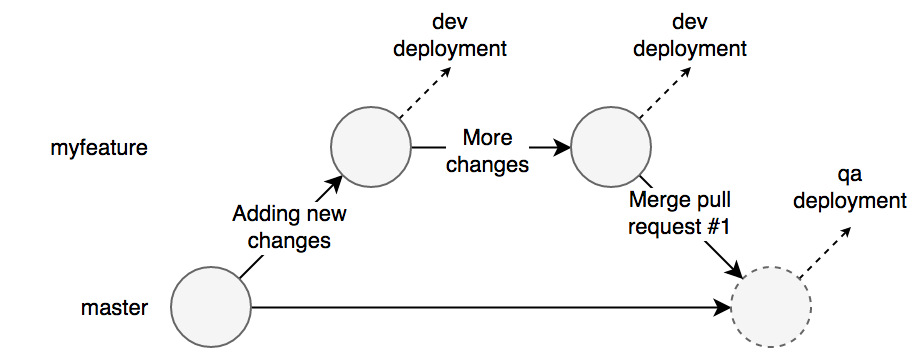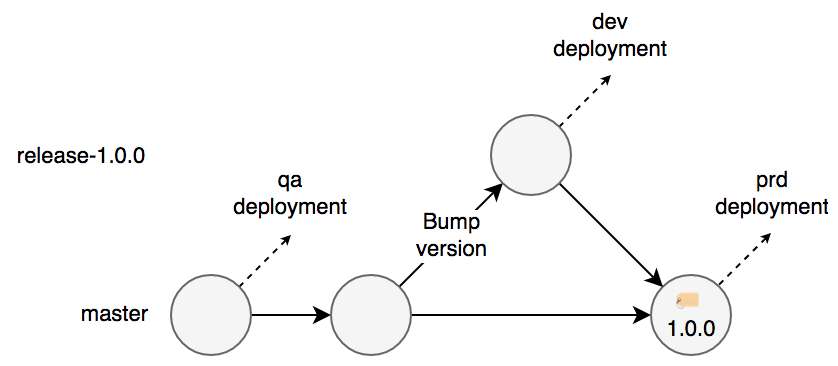Branches¶
The branching strategy in Kids First repositories is kept simple to reduce the amount of contextual awareness needed to keep branches in sync, understand the state of different branches, and reduce the number of often over-aged pull requests that need to be merged.
Kids First uses GitHub flow for its repositories which release tags being made directly on master. Branches ready for merge in a Pull Request are required to rebase on the latest master to ensure compatibility. Rebases are required over merges from master into the feature branch (easily done through the GitHub interface) to avoid commit histories full of updates from master.
Example¶

Development of a new feature on a feature branch
- A developer begins work on a new feature by making commits to a new myfeature branch
- Each commit pushed to GitHub will trigger status checks for the HEAD of the branch as well as deploy into the dev environment
- The developer creates a Pull Request (#1) to merge myfeature into the master branch
- Reviews are made and the developer continues modifying and adding commits to the myfeature branch
- When reviewers and status checks are positive, the developer will git rebase on the latest master, then merge the pull request

Deployment of master to production through a release branch and tag
- The new HEAD of master will trigger a new deployment to the QA environment
- The new HEAD is to be deployed to the production environment, the Software Releases process of creating a version bump branch is followed
- The version branch is merged back to master and the HEAD tagged with a release version and triggers a deployment to production